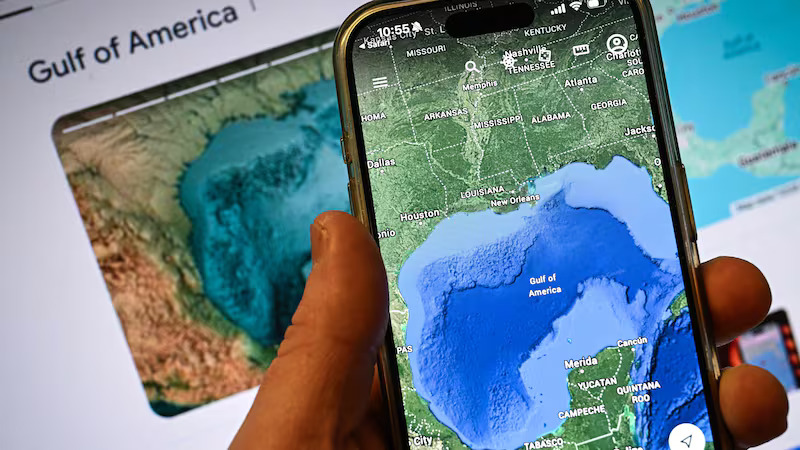Change Follows Trump’s Executive Order on “Restoring Names That Honor American Greatness”
In a move sparking international debate, Google Maps has updated its U.S. platform to reflect a name change from “Gulf of Mexico” to “Gulf of America”, following an executive order signed by U.S. President Donald Trump.
The tech giant confirmed the change in a blog post, stating that the modification aligns with its long-standing policy of updating place names in accordance with official government sources. Users in the U.S. will now see “Gulf of America”, while those in Mexico will continue to see “Gulf of Mexico”. International users outside these countries will see both names displayed.
The renaming was part of Trump’s broader initiative to “restore names that honor American greatness”, announced during his inaugural speech on January 20.
“America will reclaim its rightful place as the greatest, most powerful, most respected nation on Earth, inspiring the awe and admiration of the entire world,” Trump declared, emphasizing the symbolic importance of the change.
The executive order also reverses the Obama-era restoration of Denali’s name, renaming the iconic Alaskan peak back to Mount McKinley, a move that has already reignited controversy among Indigenous and historical preservation groups.
Google emphasized that its regional naming policies depend on official government designations.
“The names users see are based on their country location, which is determined by information from the phone’s operating system, including SIM card, network, and locale,” the company explained. Web users, meanwhile, will see names based on their selected region in Search settings or device location.
The renaming has prompted immediate backlash, with critics arguing that geographical names should not be subject to political influence.
Mexican President Claudia Sheinbaum was quick to challenge the change, referencing a historical map from 1607 that labeled the modern-day United States as “Mexican America.”
“Why don’t we call it Mexican America?” Sheinbaum quipped during a press conference, presenting the old map. “It would sound nice, right?”
The renaming of the Gulf has sparked diplomatic tensions, with some Mexican officials calling the move “historically inaccurate” and “politically motivated.” Critics argue that the change undermines centuries of recognized geographical naming conventions, setting a potentially dangerous precedent for political renaming of global landmarks.
Meanwhile, social media users have taken to various platforms, with hashtags such as #GulfOfAmerica and #NotMyGulf trending as debates over historical accuracy, nationalism, and digital cartography intensify.
While Google Maps has implemented the change, whether other international organizations, mapmakers, and geographic institutions will follow suit remains uncertain.

